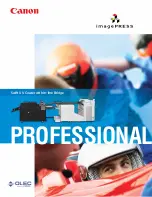
AFDR-SVN001D-EN
65
Troubleshooting
The drive displays three types of faults:
•
Warning
A warning or alarm is signaled by the LEDs on the front
of the AFD by a code on the LCP.
A warning indicates a condition that may require
attention or a trend that may eventually require
attention, and will remain active until the cause is no
longer present. Under some circumstances, motor
operation may continue.
•
Trip
A trip is the action when an alarm has appeared. The
trip removes power to the motor and, after the
condition has been cleared, can be reset by pressing
the
Reset
button. The event that caused an alarm
cannot damage the AFD or cause a dangerous
condition.
After its cause has been rectified, an alarm must be
reset to restart operation.
•
Trip Lock
A trip lock is an action when an alarm occurs that may
cause damage to the AFD or equipment. Power is
removed from the motor, and a trip lock can only be
reset after the condition is cleared by cycling power.
Once the problem has been rectified, only the alarm
continues flashing until the AFD is reset.
1.
CH531/Tracer AdaptiView only:
Collect alarm and
parameter information.
a. DO NOT cycle unit power or reset the controls.
Leave the AFD and the UC800 in their present
states.
b. Record all UC800 active and historic alarms. Make
a full chiller service report.
c. Document and check all applicable parameter
settings. This information can be verified off of the
chiller nameplate, and by referring to this manual.
d. In the Binding view of the Tracer TU service tool,
verify there is a green face indicating that the Starter
LLID is bound.
e. Record any drive diagnostics found.
2. Collect Chiller Information.
a. Note the following chiller information:
•
Operating mode and any sub-mode (i.e., 100%
or 75% load etc.)
•
Number of chiller starts, and hours of operation.
•
Time since last diagnostic shutdown (<1 minute,
<1 hour, >1 hour, etc.)
b. What was the chiller state at the time of the failure?
(Chiller starting? Running low load? Running full
load? etc.)
c. Record the chiller’s sales order and serial numbers,
and the drive’s serial and model numbers.
3. Troubleshooting
a. Measure and record the DC bus (via the Local
Control Panel [LCP]).
b. Check ALL wiring (tightness, ribbon cables fully
seated, proper phasing, etc.)
c. Refer to the Danfoss manuals for further
troubleshooting information.
WARNING
Hazardous Voltage w/Capacitors!
Failure to disconnect power and discharge capacitors
before servicing could result in death or serious injury.
Disconnect all electric power, including remote
disconnects and discharge all motor start/run
capacitors before servicing. Follow proper lockout/
tagout procedures to ensure the power cannot be
inadvertently energized. For variable frequency drives
or other energy storing components provided by Trane
or others, refer to the appropriate manufacturer’s
literature for allowable waiting periods for discharge of
capacitors. Verify with an appropriate voltmeter that all
capacitors have discharged.
For additional information regarding the safe discharge
of capacitors, see PROD-SVB06*-EN.








































